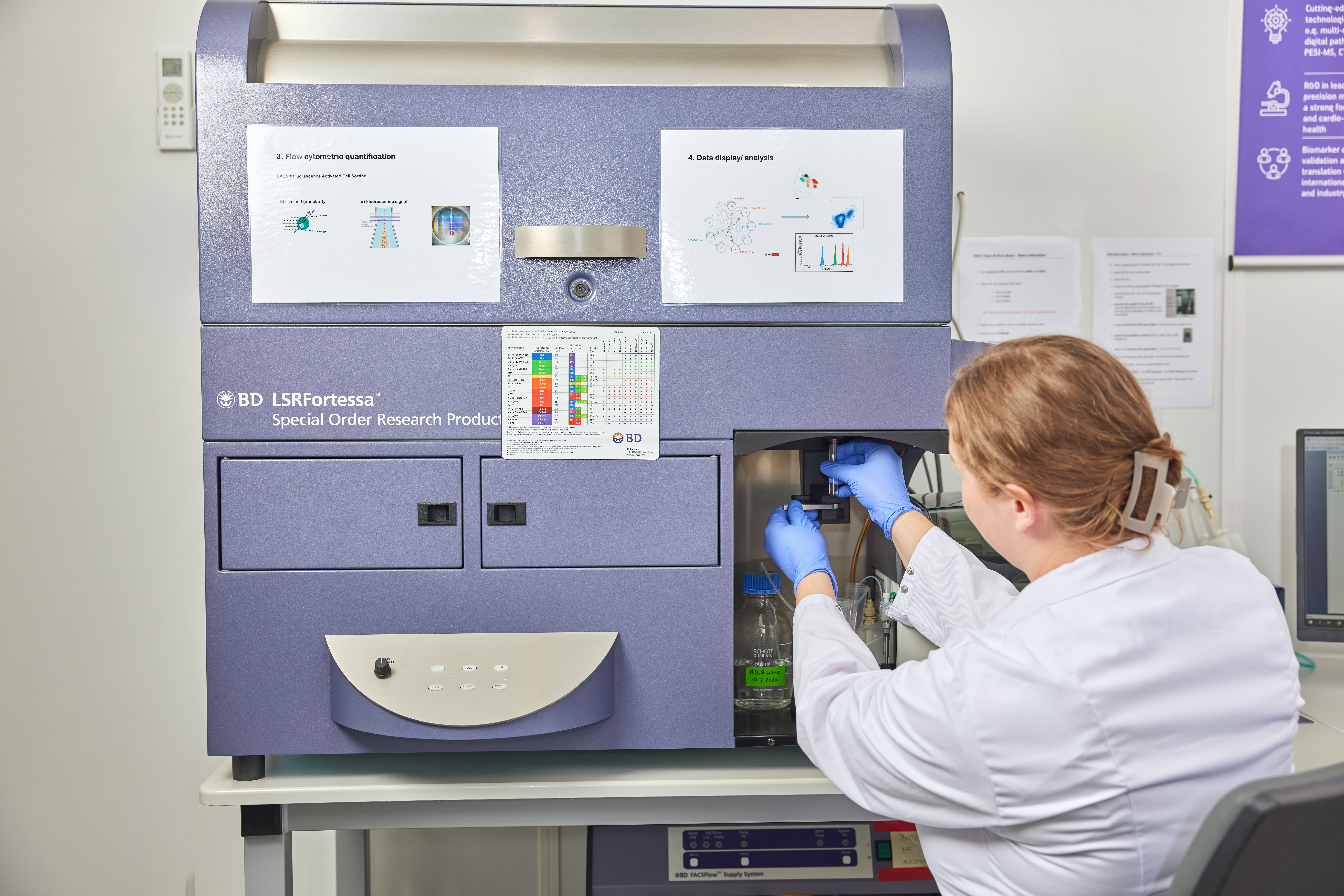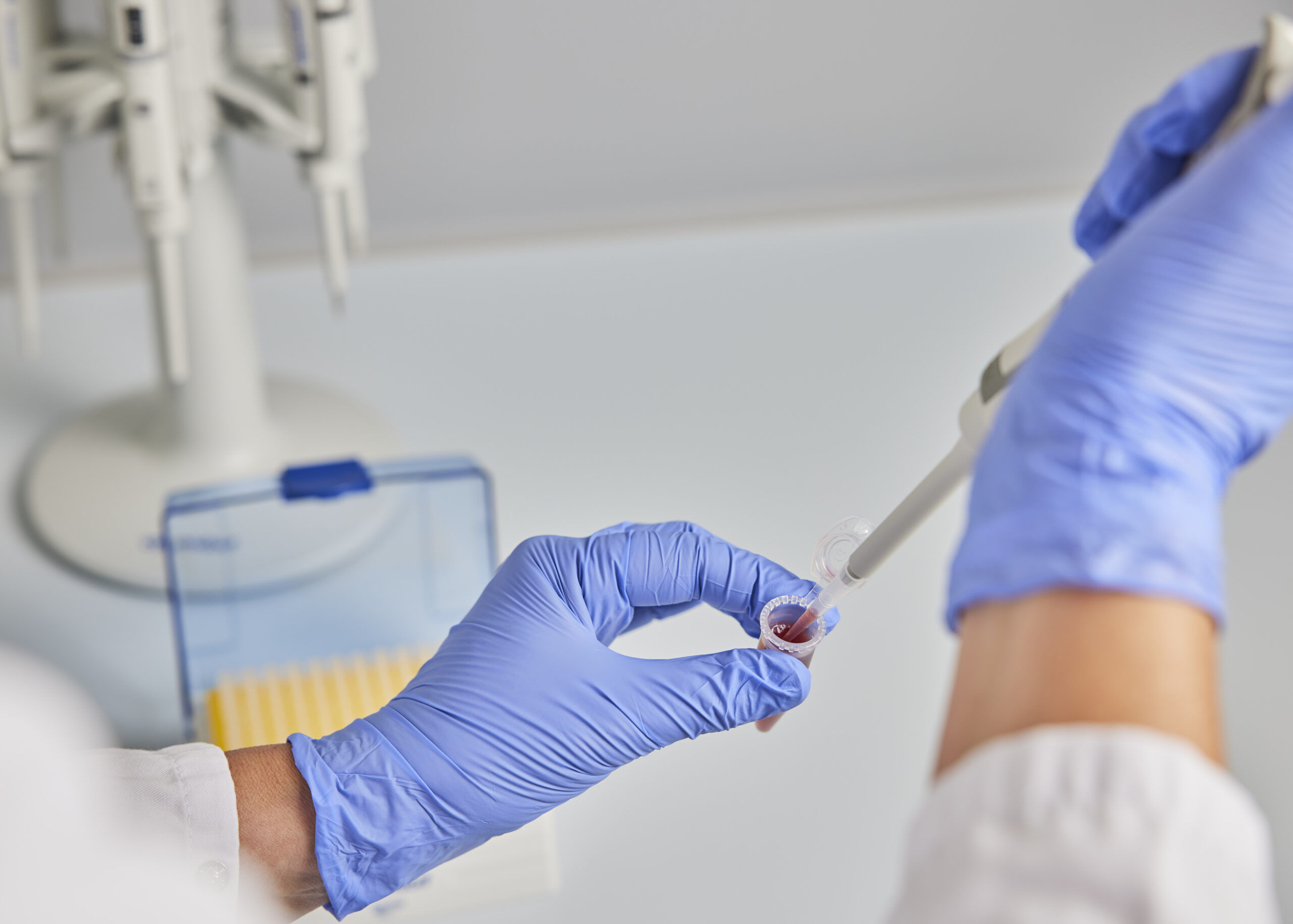Flow Cytometry
Revolutionizing cellular analysis by delivering rapid, detailed insights into multiple cellular characteristics, enhancing diagnostics, research, and treatment strategies.
Unveiling Flow Cytometry: The Power of Fluorescence-Activated Analysis
- Flow cytometry is a powerful technology that revolutionizes the way we analyse cells by allowing for the rapid, quantitative, and qualitative assessment of multiple cellular characteristics simultaneously.
- Flow cytometry enables precise identification and analysis of cells based on their unique properties through excitation of antibody-conjugated fluorochromes
- It is an invaluable tool in the diagnosis, prognosis, and monitoring of various diseases, utilizing diverse sample types such as whole blood, lymphocytes, tissue, and bone marrow.

Cutting-Edge Flow Cytometry with the LSRFortessa
Our laboratory is equipped with the LSRFortessa flow cytometer from Becton Dickinson, a state-of-the-art instrument designed to push the boundaries of cellular analysis. Our FACS LSR Fortessa provides:
- 5 distinct lasers to excite a wide range of fluorochromes
- 18 detection channels for simultaneous analysis of multiple cellular markers providing highly detailed insights into cellular populations
- High Throughput Sampler for automated and rapid analysis of multiple samples
- BD FACSDiva software graphically displays the electronic signals that were converted from light signals in the photomultiplier tubes.
- BDOne Flow solution system, a comprehensive set of reagents, setup beads, protocols and assay templates to reproducibly set up the flow cytometer and stain, acquire and analyze patient specimens for immunophenotyping over longer time spans or multiple patient visits.

The Role of Flow Cytometry in Cancer and Immunology Analysis
- Tracking changes in cell populations over time and assessing responses to therapeutic interventions.
- Revealing crucial information about tumour heterogeneity and immunological status and the presence of specific disease-related cell subsets.
- Gaining insights into the roles and behaviours of different cell types.
- Enhancing research in cancer and immunology and ultimately improving treatment strategies.
